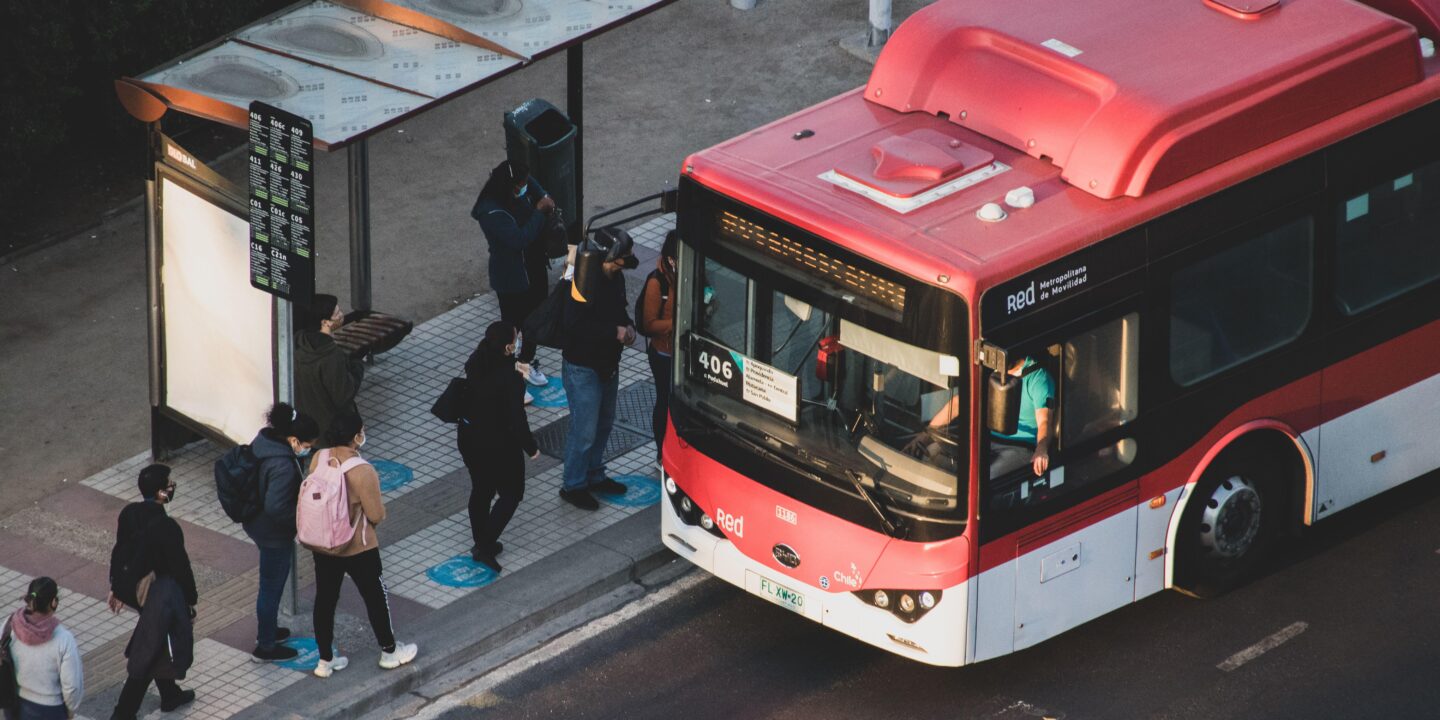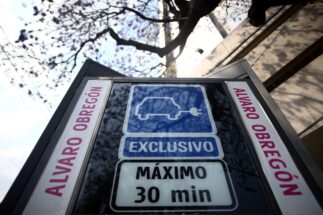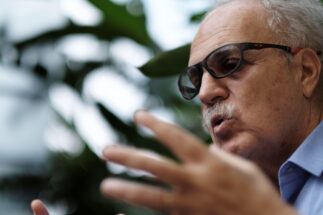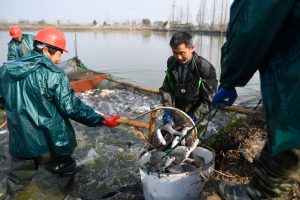Latin America’s energy outlook is a complex one. The region generates more than half of its electricity from renewable sources, more than double the shares seen in the United States and China, and more than the European Union. But it is a different story for transport, with its nations still overwhelmingly reliant on fossil fuels to get around.
What is a “just transition”?
As defined by the International Labour Organisation, a just transition means “greening the economy in a way that is as fair and inclusive as possible to everyone concerned, creating decent work opportunities and leaving no one behind.”
The transport sector accounts for 35% of Latin America’s emissions from fossil-fuel burning, notably higher than the global average of 22%. This figure continues to rise amid rapid urbanisation in the region, which is home to one of the world’s most rapidly growing car fleets.
Latin America’s dependence on fossil fuels is cause for concern, not least in terms of its effect on climate change, but also the dangers emissions pose to public health, and other associated economic and social impacts. Following rises in fuel prices, the region has seen several waves of protests and social unrest in the past year.
A transition towards electric mobility seems an obvious alternative. Nearly 200 years after the first electric vehicle was developed, the global price of batteries is lower than ever – and Latin American countries can see the potential. From Mexico to Uruguay, 27 of the 33 countries in the region have included transport as a priority sector in their emissions reduction plans.
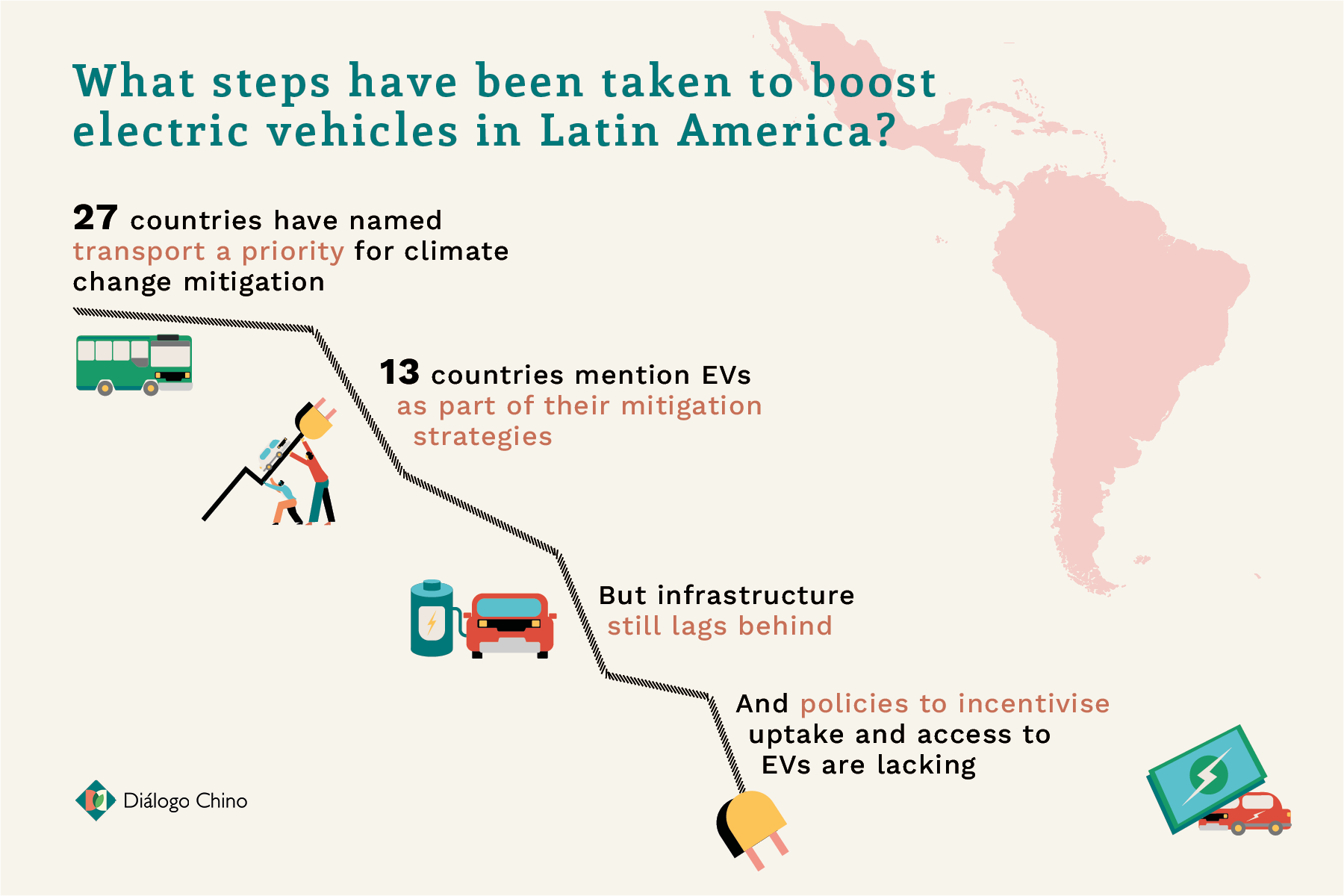
There are, however, notable obstacles to changing the way Latin America moves. A 2019 report by the Inter-American Development Bank (IDB) looked at 10 countries in the region and pointed to some common themes. One is the lack of incentives on offer to make the switch away from petrol or diesel.
Across the region, reducing import tariffs is the main and sometimes only public policy countries have introduced to boost the purchase of electric vehicles. Verónica Serafini, a Paraguayan researcher in economics and fiscal policy from the National Autonomous University of Mexico (UNAM), points out that it is necessary to analyse whether these benefits really help the end consumer or only the intermediaries, such as car manufacturers and importers.
Almost no country, for example, provides direct subsidies for purchases. The exception to this has been Uruguay, which in 2021 tendered its first ever subsidy for the purchase of electric buses, to support local governments in the electrification of their public transport networks.
Meanwhile, Latin American countries still spend a total of US$46 billion each year on fossil fuel subsidies, according to the International Monetary Fund.
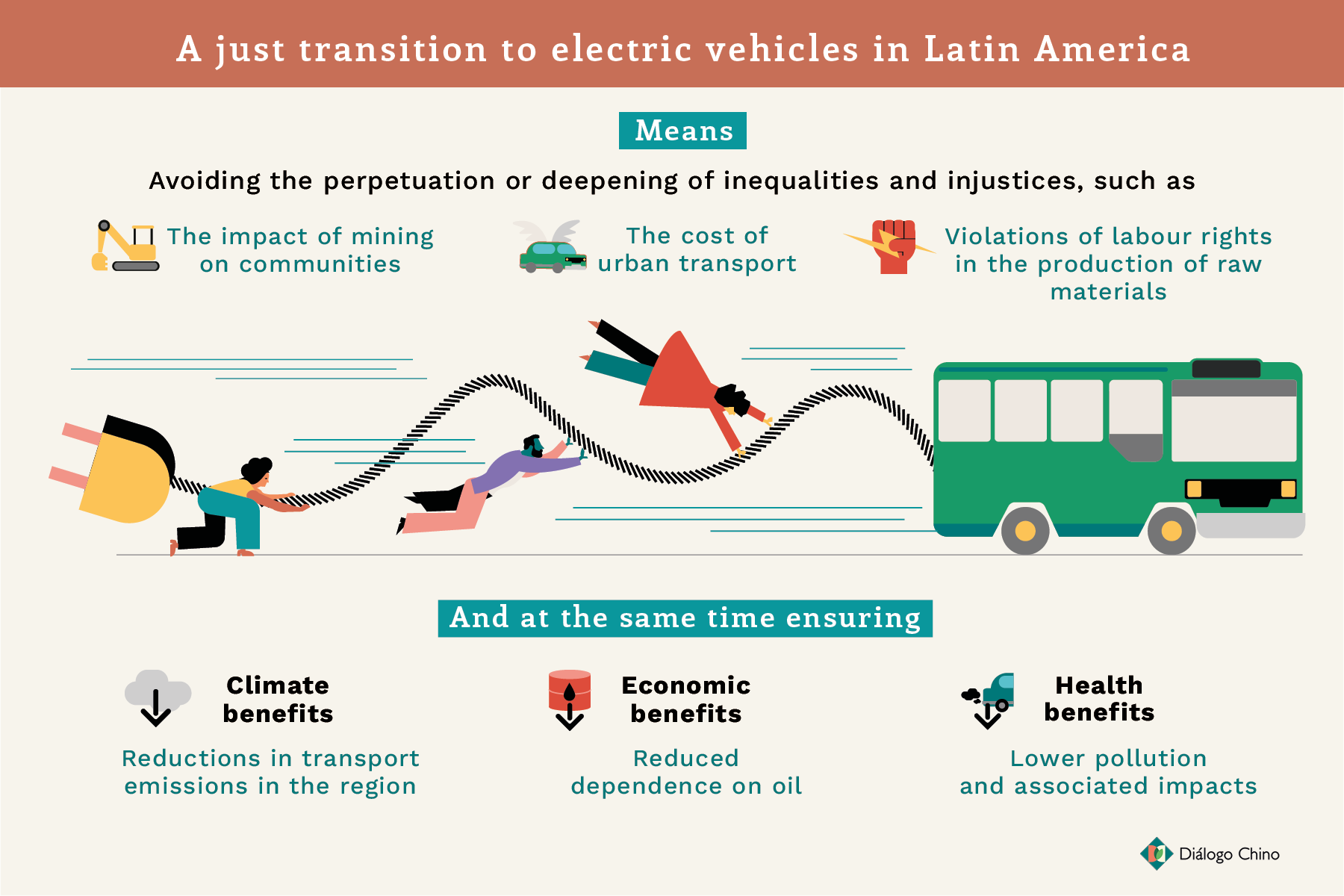
A 2021 report commissioned by Anfavea, the association of vehicle manufacturers in Brazil which includes Ford, Hyundai and BMW as members, looked at the role of EVs in the country and found investment in new production and assembly plants would only be worthwhile if there were not only incentives to purchase electric vehicles, but also direct disincentives – such as so-called “green taxes” – to purchase fossil fuel vehicles.
Latin America faces further obstacles in meeting the needs for charging infrastructure for electric vehicles. In its report, the IDB identified low national coverage of charging points as a problem in half of the ten countries it surveyed, with three others having only a handful of chargers located in specific areas of their territory.
In what is by multiple measures the world’s most unequal region, there are also calls to ensure that a transition to electric mobility is a “just transition” – one that not only maximises the benefits of moving away from fossil fuels, but also avoids perpetuating existing problems. Cases from Costa Rica, Chile and Paraguay illustrate how electric transport does not come with guarantees of avoiding environmental damage and labour precarity, and isn’t immune to influence from hostile business lobbies.
Costa Rica leading the charge?
The nation at the forefront of electric transport in Latin America is Costa Rica. As part of its National Decarbonisation Plan to 2050, it has established lower electricity tariffs for the charging of electric buses nationwide, set a quota to electrify at least 5% of its bus fleet every two years, and set the target for 95% of private vehicles on its roads to be electric by mid-century. In 2022, plans were also announced for the country’s first battery-recycling factory.
However, for José Daniel Lara, a researcher at the US National Renewable Energy Laboratory in Colorado, the near-term feasibility of electric mobility in the planning of cities such as San José, the capital of Costa Rica, must be called into question, as it “requires major transformations to be a truly sustainable place”.
There is an idea that electric vehicles, just because they are electric, are the solution to everything
Lara points out that there is a lack of social equity in the access to private electric vehicles. “The public policies implemented bring more benefit to those who buy the most expensive vehicles,” said the researcher. Those who buy EVs get tax benefits when the vehicles are imported to Costa Rica, but the more expensive models carry greater benefits than those in the mid range, he said.
“If I go and import a high-end electric vehicle like the [all-electric] Porsche Taycan to Costa Rica, I will have more tax benefits than if I buy a mid-range electric vehicle like a DFSK [a Chinese car and van manufacturer]. It’s a regressive system,” Lara added.
This inequality hinders the adoption of electric vehicles by the less affluent, said Lara, an issue that is likely to prevail across the region, but one that could be bridged by increased investment in electric public transport. Costa Rica’s new president, Rodrigo Chaves, however, has dialled back such ambitions, including by dismantling an electric train project that had been proposed as part of the country’s decarbonisation plan.
Lara also indicated his concern that in Costa Rica there has been limited attention shown over the environmental impacts at source, in terms of the raw materials and manufacture of vehicles. “There is an idea that electric vehicles, just because they are electric, are the solution to everything,” he said.
Environmental impacts
The most contentious environmental impacts of electric vehicles occur in places such as the Atacama Desert in Chile, a landscape speckled with coloured pools of brine at production plants, in which concentrated lithium carbonate changes from a deep blue to bright yellow as it dries up in the sun.

Lithium – an essential resource for electric vehicle batteries – is just one of the materials that fuels hopes that weaning the world off fossil fuels isn’t just a pipe dream. However, its evaporation-based extraction process is noted for its high demand for water: producing the 4 kg of lithium needed for the battery of an average electric car requires roughly 4,000 litres of water, in a country where communities already have extreme difficulty accessing the resource amid an ongoing “mega-drought”.
For example, villagers in the Chilean village of San Pedro de Atacama have in recent years openly questioned the expansion of the lithium sector, saying that they could no longer support their subsistence livestock due to the lack of water, which they claim had been exacerbated by lithium extraction activities.
In 2016, the mining company SQM, which operates a lithium plant near San Pedro de Atacama, was investigated for manipulating its drought contingency plan in order to extract more water than it was entitled to. Despite this, and five other environmental violations in the Atacama salt flat between 2016 and 2019, its mining licence was renewed.
Tensions between companies and communities have also been encountered in neighbouring Argentina, which is home to vast lithium deposits and, along with Chile and Bolivia, is part of the so-called “lithium triangle”.

The draft constitutional text was rejected even in the country’s so-called “sacrifice zones” – areas in proximity to polluting industries, where mostly lower-income communities experience chronic socio-economic problems and health issues. However, Subercaseaux said that “it is not a closed chapter,” with the country looking to continue the process of constitutional reform and begin work towards a new draft.
Elsewhere, Chile established 30 measures in its National Strategy for Sustainable Mobility that propose a system of electric transport that is not only economical but also safe.
Paraguay: ripe for investment
A nation at the more nascent stage of its electric transport development is Paraguay. Despite being the country with the world’s highest amount of renewable energy per capita, thanks to the Itaipú and Yacyretá hydroelectric dams, it lags behind the region in the adoption of electric vehicles.
As gas prices rise, electric vehicles are presenting Paraguay with an increasingly attractive alternative, in terms of fuel costs, if not yet vehicle prices. Meanwhile, a 2021 government report indicated that, over the medium term, it will be cheaper to replace the public transport fleet in the capital city Asunción with electric buses than conventional diesel vehicles. But the report also acknowledged that due to a lack of investment in infrastructure, it would be impossible for the country’s electricity grid to support a transport transition today.
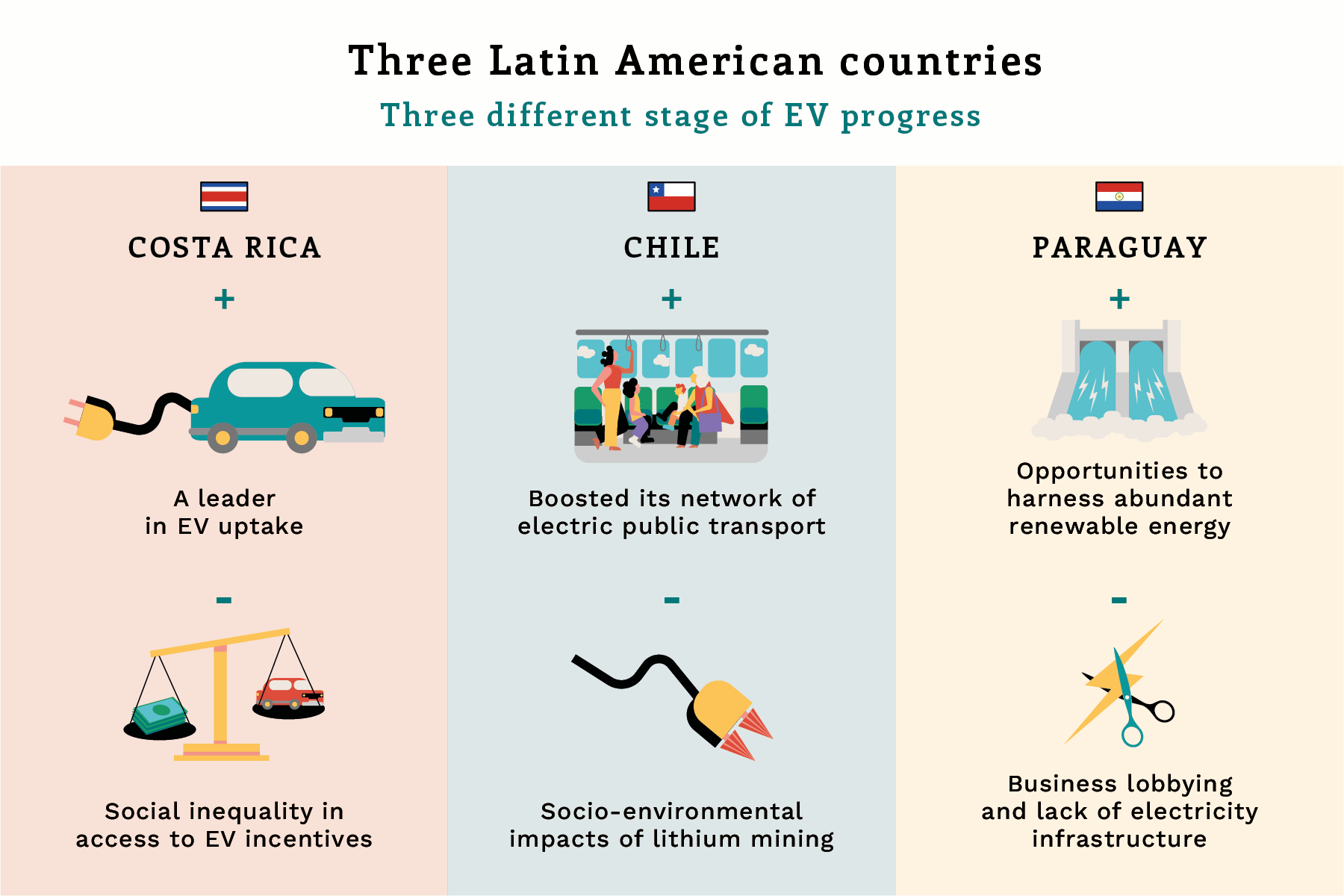
There had been great pressure from the automotive industry and fuel importers, which managed, for example, to eliminate transition measures promoting electric motorcycles, in a country where motorcycles are the main means of transportation.
There is, however, much interest in the motorcycle market in Paraguay. The promotion of electric transport on two wheels has been proposed by the SINACTRAM, a union for motorcycle and delivery workers.
The union’s argument is that investing in the sector first “would be the easiest route,” said Federico Ferreira, the union’s representative in the creation of the national electromobility law. “It would improve our quality of life and economy and we would be collaborating, as a sector, with the environment.”
Ferreira stresses that without labour rights, the transition will not work, a point emphasised by a recent report on the automotive sector published by the World Resources Institute (WRI). The organisation says that a just transition will require governments to provide policy support to encourage the development of new jobs in the industry, to map and measure the employment impacts of the transition and to facilitate a dialogue between companies and workers.
